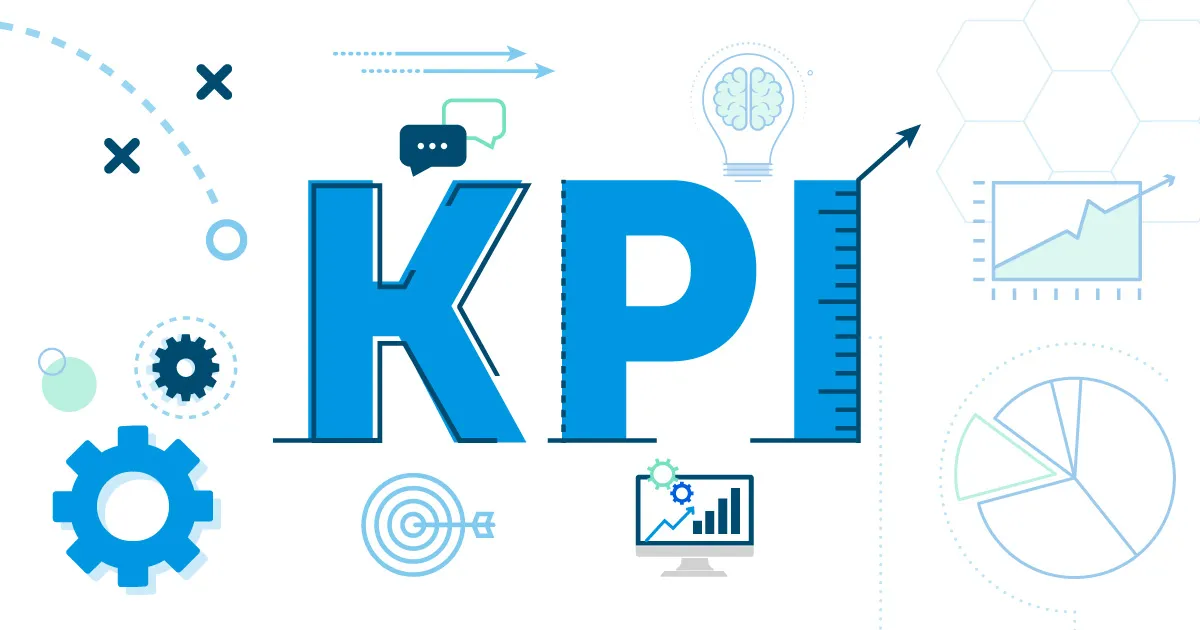
Master App Success with Proven KPI Framework Strategies in 2025
Master App Success with Proven KPI Framework Strategies in 2025
Unlocking explosive growth for your mobile application demands more than intuition-it requires a robust KPI framework that aligns every metric with business success. From tracking user acquisition to measuring lifetime value, a well-structured app KPI framework transforms raw data into actionable insights. This comprehensive guide reveals how to build, implement, and optimize a KPI system that drives retention, engagement, and revenue in today’s competitive app ecosystem.
Whether you’re launching a new app or scaling an existing one, understanding app performance metrics through a hierarchical framework ensures you never miss critical signals. Industry leaders use this approach to achieve 3x higher retention and 40% better monetization. Discover the five-level structure, diagnostic tools, and step-by-step implementation that top app marketers swear by.

Why Every App Needs a Structured KPI Framework
Isolated metrics create blind spots. A single high download number means nothing without context-did users activate? Did they return? A KPI framework solves this by organizing metrics into a cohesive system that reveals cause-and-effect relationships. It connects acquisition channels to long-term revenue, ensuring every marketing dollar delivers measurable ROI.
The framework acts as your app’s nervous system. Level 1 metrics provide the vital signs-reach, activation, engagement, retention, and business outcomes. Level 2 metrics serve as diagnostic tools, explaining why vital signs fluctuate. This hierarchy prevents reactive decisions and enables proactive optimization.
Apps using structured KPI frameworks see 65% faster issue resolution and 2.5x better alignment between product and marketing teams. The system scales with your app’s maturity-from launch-phase growth hacking to mature-app monetization refinement.
The Five Core Level 1 KPI Categories Explained
Every successful app KPI framework rests on five foundational pillars. These Level 1 metrics form your North Star dashboard-the first thing you check each morning.
1. Reach: Building Your User Foundation
Reach measures how effectively you attract potential users. The primary metric-total app installs-tells only part of the story. Level 2 diagnostics reveal channel efficiency:
- Paid vs. organic install ratio
- Web-to-app conversion rate
- Cost per install by campaign
- Impression share in app stores
For example, a fitness app discovers 70% of installs come from TikTok ads with $2.10 CPI, while Instagram delivers only 15% at $4.50 CPI. This insight triggers immediate budget reallocation, boosting reach by 40% without increasing spend.
2. Activation: Turning Downloads into Users
Activation measures first-session success. The Level 1 metric-onboarding completion rate-should exceed 60% for healthy apps. Level 2 metrics diagnose drop-off points:
- Time to first value (TTFV)
- Permission grant rates
- Account creation completion
- Core feature discovery rate
A language learning app finds users who complete the placement quiz within 3 minutes are 4x more likely to subscribe. They redesign onboarding to surface the quiz earlier, lifting activation from 52% to 78% in two weeks.
3. Engagement: Measuring Daily Love
Engagement reveals how deeply users connect with your app. DAU/MAU ratio serves as the headline metric-aim for 20%+ for consumer apps. Level 2 metrics include:
- Session length and frequency
- Feature adoption rates
- Content consumption depth
- Social sharing events
A meditation app notices users who complete 5+ sessions in their first week have 90% 30-day retention. They implement streak reminders and guided pathways, increasing average sessions from 3.2 to 7.1 per week.
4. Retention: Building Lifelong Relationships
Retention predicts long-term success. Track D1, D7, and D30 retention rates-top apps achieve 40%+, 20%+, and 10%+ respectively. Level 2 diagnostics examine:
- Feature-specific return rates
- Push notification response
- Churn triggers and timing
- Cohort behavior patterns
An e-commerce app identifies users who add items to wishlist but don’t purchase within 48 hours have 70% churn risk. They trigger personalized re-engagement campaigns, reducing 7-day churn by 35%.
5. Business-Specific: Your Revenue Engine
Business metrics tie everything to financial outcomes. Customer Lifetime Value (LTV) serves as the ultimate North Star. Supporting metrics include:
- Average Revenue Per User (ARPU)
- Conversion rates by funnel stage
- Subscription renewal rates
- Ad monetization efficiency
A gaming app calculates LTV at $12.40 but acquisition cost at $15. They optimize early-game monetization to increase D7 revenue by 60%, achieving positive ROI within 14 days.
Four-Step Process to Build Your KPI Framework
Creating an effective app KPI framework follows a proven four-step methodology that ensures alignment and actionability.
Step 1: Define Your App’s Core Value Proposition
Start with clarity: What problem does your app solve? How does it improve users’ lives? A productivity app might define success as “helping users complete 20% more tasks daily.” This North Star guides every KPI selection.
Document your value proposition in one sentence. Test it with users. Refine until it resonates. This foundation prevents metric vanity and ensures business alignment.
Step 2: Map the Complete User Journey
Visualize every touchpoint from awareness to advocacy. Create a journey map showing:
- Awareness channels
- Discovery moments
- Onboarding flow
- Core value delivery
- Monetization triggers
- Referral opportunities
Identify drop-off risks at each stage. A food delivery app maps the path from ad click to first order, revealing 40% abandonment at address entry. They simplify the form, boosting completion by 25%.
Step 3: Select High-Impact KPIs Only
Resist metric overload. Choose 3-5 Level 1 KPIs and 2-3 Level 2 diagnostics per category. Prioritize based on app maturity:
- New apps: Focus on reach and activation
- Growing apps: Emphasize engagement and retention
- Mature apps: Optimize business metrics and LTV
Use the “So What?” test: If a metric changes, will it drive action? If not, eliminate it. This keeps your dashboard focused and decision-ready.
Step 4: Ensure Measurability and Automation
Every KPI must be trackable in real-time. Implement analytics tools like Mixpanel, Amplitude, or Firebase. Set up automated dashboards that highlight anomalies-green for on-target, red for attention needed.
Define calculation methodology precisely. For example, DAU = unique users opening the app in a 24-hour period. Document data sources and refresh cadence. This prevents disputes and ensures consistency across teams.
Advanced Data Analysis Techniques
Raw numbers tell stories-segmentation reveals truth. Break down KPIs by:
- Platform (iOS vs Android)
- Acquisition source
- User demographics
- Behavior cohorts
A news app discovers iOS users read 3.2 articles per session vs 1.8 for Android. They prioritize iOS feature development, increasing premium subscriptions by 45%.
Conduct funnel analysis to identify conversion leaks. A shopping app finds 80% cart abandonment at checkout. A/B testing streamlined payment flow recovers 30% of lost revenue.
Turning Insights into Growth Levers
The real power of your KPI framework lies in action. For every metric, define:
- Owner responsible for improvement
- Target range (good/excellent)
- Levers available to influence outcome
- Experiment backlog
When retention drops, don’t guess-consult your framework. Low D7 retention? Check engagement metrics. Are users completing core actions? If not, trigger personalized re-engagement based on behavior patterns.
Common KPI Framework Mistakes to Avoid
Even smart teams fall into traps. Avoid these pitfalls:
- Tracking vanity metrics (total downloads without quality)
- Ignoring cohort analysis
- Setting static targets without context
- Failing to update framework as app evolves
Review your framework quarterly. As your app matures from growth to monetization focus, shift KPI emphasis accordingly. What mattered at 10K MAU may not matter at 1M.
The Future of App KPI Frameworks
AI-powered predictive analytics will transform KPI frameworks. Imagine systems that not only report metrics but forecast outcomes and recommend actions. Machine learning will identify hidden correlations-like weather impacting food delivery app usage-and trigger automated responses.
Privacy changes demand new approaches. As third-party cookies fade, first-party data through your KPI framework becomes priceless. Apps collecting rich behavioral data will outcompete those relying on external signals.
The framework itself evolves into a living system-self-optimizing, cross-platform, and integrated with marketing automation. Your KPI dashboard becomes the central nervous system of app growth.
Start Building Your KPI Framework Today
Every day without a structured app KPI framework costs growth opportunities. Begin with your North Star metric. Map one user journey. Select three Level 1 and Level 2 KPIs. Implement tracking. Review weekly.
Apps following this disciplined approach achieve 3-5x better outcomes than those flying blind. Your framework isn’t a project-it’s your operating system for sustainable success. Build it, live it, and watch your app thrive in 2025 and beyond.
Comment / Reply From
You May Also Like
Popular Posts
Newsletter
Subscribe to our mailing list to get the new updates!





